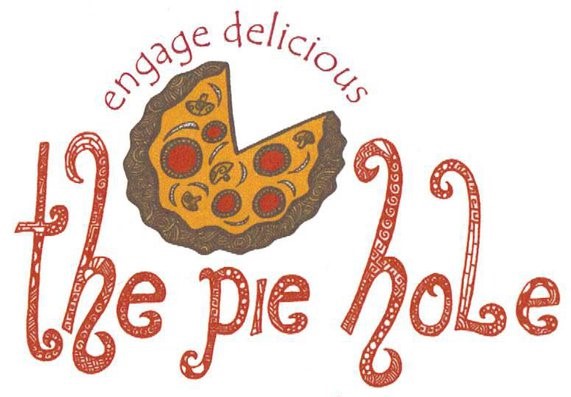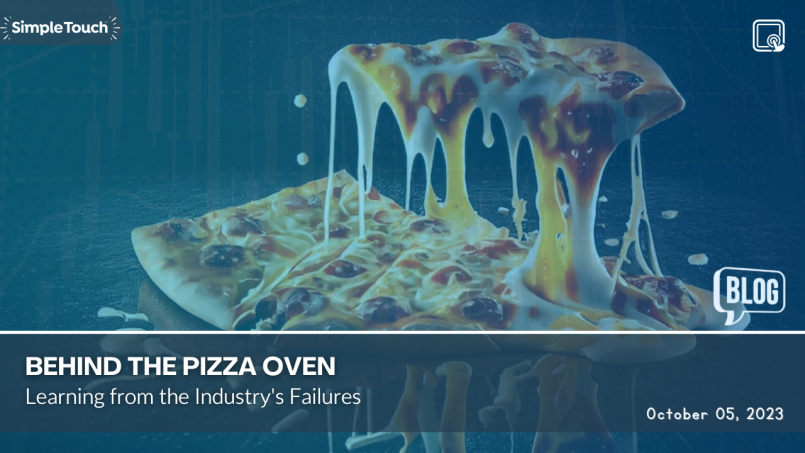In the sizzling world of pizza, where the aroma of perfectly baked pies and the allure of crispy crusts can enchant any palate, there exists a tale of two sides. For every triumphant pizza venture that rises to iconic status, there are countless others that fizzle out, succumbing to the fierce competition and ever-changing tastes of the discerning pizza-loving public.
In this blog, we delve deep into the pizza industry’s annals, exploring major blunders, missteps, and mishaps that have shaped its landscape. But we don’t stop at just dissecting failures; we aim to extract invaluable insights and lessons from these setbacks.

So, whether you’re an aspiring pizzeria owner looking to embark on your own pizza odyssey or an established pizza aficionado seeking to bolster your knowledge, join us on a journey through the world of pizza – a world where even the most catastrophic errors can become steppingstones to success. Welcome to “Pizza Industry Lessons: Turning Mistakes into Success.”
1. Flavors of Now – Pizza Hut
In 2014, Pizza Hut embarked on a bold venture by introducing a novel line of pizzas classified as “gourmet.” These pizzas featured unique toppings like cherry peppers, honey-sriracha crust, and a variety of balsamic drizzles. Marketed under the banner of the ‘Flavors of Now’ menu, this promotion unfortunately proved to be a misstep, resulting in a significant 3.5% decline in sales for that quarter.
This episode underscores the importance of specialization in a saturated market. Attempting to diversify too extensively, as exemplified by offering gourmet pizza options alongside your well-established classic and traditional pizzas, can lead to customer confusion regarding your brand identity and the precise offerings available at your establishment. The lesson here is clear: define a distinct brand identity and steadfastly adhere to it to avoid diluting your message and customer expectations.

2. Priazzo – Pizza Hut
During the 1980s, Pizza Hut embarked on an ambitious campaign to introduce deep-dish pizza, famously known as ‘Priazzo,’ to a nationwide audience. The endeavor came with a substantial investment of $15 million in marketing efforts. The concept featured two layers of crust sandwiching a generous amount of cheese and various toppings, but it ultimately proved to be financially impractical and time-consuming to produce.

This cautionary tale highlights the importance of maintaining consistency in pizza styles. When you mix pizza styles as distinct as New York-style and deep-dish, the significant differences in preparation and cost can result in varying delivery times and expenses. This, in turn, leads to an inconsistent customer experience when patrons order from your establishment. Therefore, it’s advisable to stick with a clear and defined pizza style to ensure a streamlined and dependable customer experience.
3. McPizza – McDonald’s
In the late ’80s and early ’90s, McDonald’s made the strategic decision to diversify its menu by introducing pizza, aptly named ‘McPizza.’ However, this foray into the pizza realm revealed a significant mismatch with their core business model, which focused on delivering food in a matter of minutes. The preparation time required for pizzas was simply not compatible with their commitment to speedy service.

This episode offers a vital lesson: if fast and efficient service is a fundamental element of your business model and brand identity, it’s crucial to avoid offering menu items that impede your ability to meet the demands for swift service. Even beloved menu items, such as McPizza, can fall short when they don’t align with your customers’ expectations for quick and efficient dining experiences. Therefore, maintaining consistency with your brand’s core values is paramount to overall success.
4. Oreo Dessert Pizza – Domino’s
Traditionally, pizza has been synonymous with savory flavors, but in 2007, Domino’s decided to tread a different path by introducing an Oreo dessert pizza. This unconventional creation featured a substantial cookie as its base, generously adorned with crumbled Oreos and a drizzle of vanilla sauce. However, the final twist was that it was served hot, a departure from the expected cold or room-temperature dessert.
The outcome? This sweet pizza left countless fans unimpressed and, in many cases, dismissive of the concept.
This episode underscores a vital lesson: when the core of your menu and best-selling items predominantly consists of traditional savory pizzas, deviating drastically to offer something entirely opposite might not be met with enthusiasm. It’s a classic case of the right product served to the wrong target audience. If your establishment primarily specializes in desserts, a dessert pizza can indeed be a delightful addition, but context and audience alignment are key factors in determining success in such culinary ventures.
5. Rapid Expansion – Pie Hole Pizza
In a startling turn of events, the modest Illinois-based pizza chain, Pie Hole Pizza Joint, experienced a rapid decline from having two thriving locations to none at all in less than a year. The downfall began when the company attempted to launch a premature second location, a move that triggered a series of financial challenges, ultimately forcing them to shutter both outlets within a mere 12-month span.

This situation underscores a crucial lesson for anyone considering restaurant business expansion. Foremost among the prerequisites is the necessity of consistently generating substantial profits and achieving a level of operational stability where your pizzeria operates seamlessly. Attempting expansion before these foundational elements are firmly in place can spell financial trouble and potentially lead to the downfall of your entire enterprise.
6. Nothing but Stuffed Crust – Pizza Hut
While it might be a tad hasty to label it as a complete failure, the initial response to Pizza Hut’s ‘Nothing But Stuffed Crust’ innovation in early 2021 has left much to be desired. The multi-national pizza giant unveiled this somewhat Frankenstein-esque creation at a select number of U.S. outlets for a limited period, and the customer feedback was decidedly mixed.

This scenario underscores the importance of balancing novelty with customer preferences. While creative gimmicks can serve as effective marketing tools, it’s crucial to ensure that what you’re offering aligns with your customers’ desires. Conducting customer surveys can be an invaluable strategy in gauging the market’s receptiveness to your new offerings, helping you make informed decisions that resonate with your target audience.
Conclusion
In the world of business, there’s a sentiment that can send shivers down any entrepreneur’s spine – the prospect of your business ending up on a list of failures. Such lists are not only disheartening but can serve as cautionary tales for others. For pizzeria owners and restaurateurs, this fear is no different. The idea of your beloved pizzeria becoming the subject of a “what not to do” case study is a nightmare scenario.
But how can you ensure your business stays off such lists? How can you protect your investment, your livelihood, and your passion from becoming a statistic? The answer lies in proactive measures, strategic thinking, and continuous improvement.
First and foremost, it’s crucial to stay informed about the challenges that can beset a pizzeria. These challenges can range from operational difficulties to changing consumer preferences to economic downturns. By staying on top of industry trends and best practices, you can anticipate and address potential pitfalls before they become insurmountable obstacles.

One effective way to do this is by seeking out resources and communities that offer valuable insights and support. Subscribing to blogs, joining industry associations, and attending conferences can provide you with a wealth of knowledge and the opportunity to learn from the experiences of others.
Additionally, engaging with your customer base is paramount. Listen to their feedback, conduct surveys, and pay close attention to their preferences. Understanding your customers’ needs and desires is the key to staying relevant and offering products and services that resonate with them.
Another crucial aspect is financial prudence. Managing your finances wisely, budgeting carefully, and monitoring your costs can help you maintain profitability even in challenging times. It’s also wise to have a contingency plan in place for unexpected crises.
In essence, the message here is clear: Your pizzeria’s success is not solely determined by luck or chance. By taking proactive steps, staying informed, and continually improving your business practices, you can protect it from ending up on any undesirable lists. Instead, your pizzeria can stand as a shining example of success and resilience in the competitive world of foodservice.
